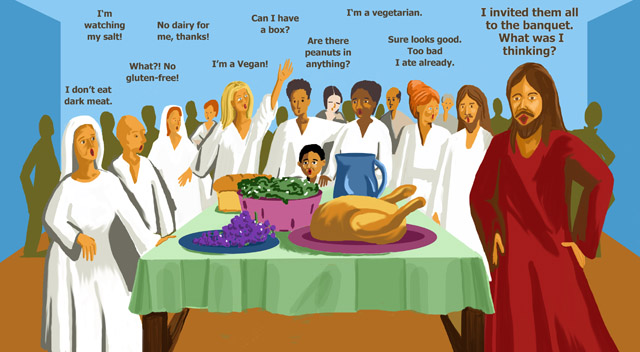New Rules for Winning in the New Church
TV’s top shrink has written a new book.
I don’t want to hype it. He does a pretty good job of that himself.
It’s the subtitle that interests me. New Rules for Winning in the Real World
When talking about his book Dr. Phillip McGraw says (repeatedly) that the world has changed. We can’t approach people or situations with the same level of trust we might have had 30 years ago.
Watch out for people who take advantage of your trust.
We are told we can no longer give people the benefit of the doubt. The advice: Observe. Ask questions. Follow your instincts. Be ever alert to motives and behaviors.
Sad to say, but this is good advice for trusting Christians, too.
Today’s Church is not like the Church many of us grew up in.
We now know that we cannot automatically trust church leaders to behave in godly ways. Headlines for the last decade have shown us that the people we trust, the people we ask our children to trust, are often unworthy. Problems are no longer rare and isolated. We know that criminal behavior has been widespread and enduring, existing under the protected status of “church.” The guilt goes beyond the parish. It reaches into the highest offices.
It is a new world!
Two factors make his advice particularly applicable to religion.
- The Church today exists in a state of distress. Mainline membership and attendance are plummeting along with offerings. At the current rate of decline, some denominations will disappear within 40 years. The church is not attracting the best and brightest to careers of service. Seminaries are struggling to find students. Candidates are often second career or interested in part-time ministry only—at their convenience more than at God’s call. The sense of sacrifice and dedication that once characterized candidates for ministry is increasingly rare. The future of church leadership is shaky.
- The Church is largely immune from the law. Clergy can operate knowing that there is low likelihood of question or challenge. Many, many people will give clergy the benefit of the doubt and look with suspicion on anyone who makes any challenge.
In the free world, the church is as close as you get to absolute power. We know the saying about absolute power. It corrupts absolutely.
As the mainline church faces continued economic challenges there are greater temptations. Church leaders crave power. The power that wealth gave them is disappearing along with status as our culture grows more and more secular. They are lording power over fewer and fewer people.
Rules start to be broken. Polity is ignored.
Constitutions are tweaked to increase power.
These actions are begging for challenge, but the Church bets that in most cases they will achieve their objectives without question.
When at last leaders are challenged, they MUST win.
All the tenets of faith are quickly forgotten.
Let’s look at what is happening today in the Anglican Church in Canada. It begins with a familiar story—a land and asset grab. In this case the bishop takes the dispute further.
Five years have passed since this 2008 land grab. Bishop Michael Bird of the Niagara region is resurrecting the conflict by suing a lay person who wrote about church leaders on a satirical blog. The stories we’ve read are just silly, obvious farces.
Bishops expect adulation. They can’t take criticism. They have lost the ability to laugh at themselves.
And so in Canada, the bishop uses his protected status to attack a 66-year-old man, a loyal church member who undoubtedly donated a great deal to his church over the years. The bishop claims that the blog cost him $400,000 in damages. We can only wonder what kind of deficit his regional body might be carrying. We know here in Philadelphia that SEPA’s interest in Redeemer’s assets always came when SEPA faced severe budget problems.
When bishops have tantrums, they tend to be costly, and the Church or its members pay the bill.
The Canadian news has many similarities to Redeemer’s and other land grabs in ELCA synods. The common threads:
- No attempt to work with the congregation or lay leaders.
- No dialog, just the strong arm of the Church, wielding what is left of waning power.
- Legal actions against lay members with clergy running for the hills.
- Public presentations that talk about “discernment,” “dialog,” and ridiculous but righteous-sounding allusions to “death and resurrection.” They represent that taking what does not belong to them is God’s work! That’s what they are doing, and the ELCA’s tagline is “God’s Work. Our hands.”
The Church today is desperate.
New rules are needed.
- Don’t trust that church leaders are wise just because they are elected to office.
- Don’t assume that church leaders are immune from temptation.
- Don’t assume that church leaders will practice what they preach.
- Don’t assume that somebody else will speak up before you, if there is really something wrong going on. Years went by before the Roman Catholic Church took action against 27 priests for misconduct.
- Do assume that things will get very bad indeed before the whole church recognizes there is any problem at all.
As it is, it’s open season on lay people. The more knowledgable, dedicated and invested in church, the more vulnerable we are.
The only safe Christians are those who sit quietly in the pews (or in the chancel).
And we wonder why churches are empty on Sunday morning.





